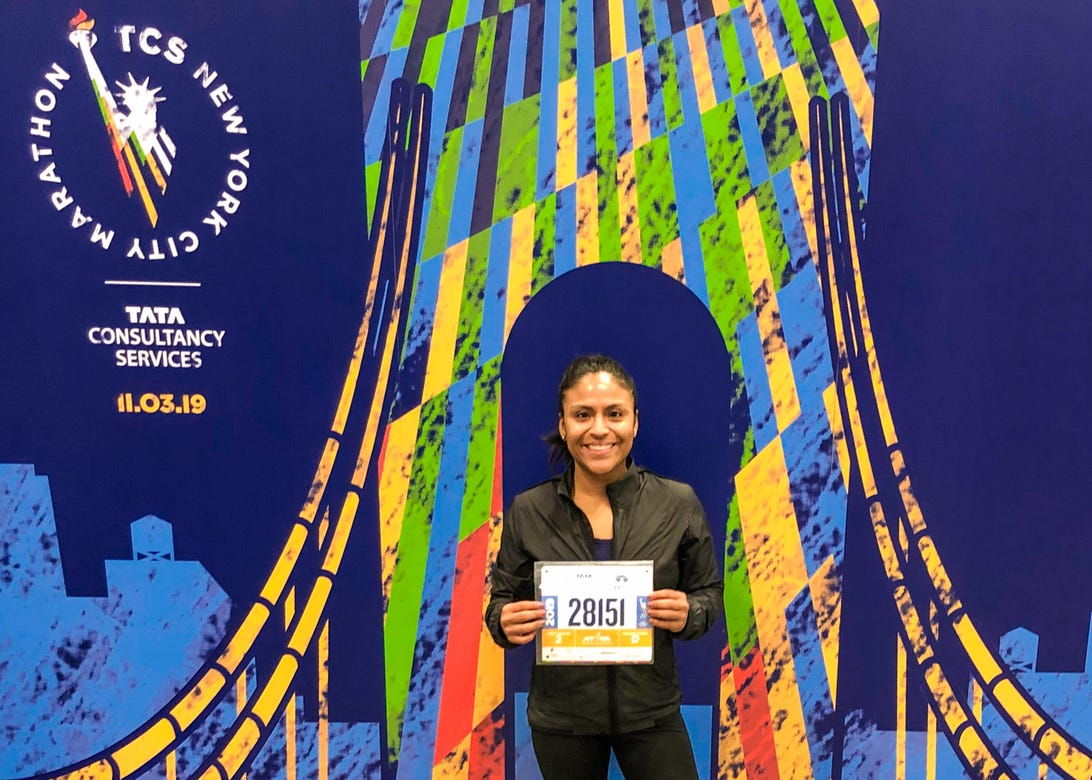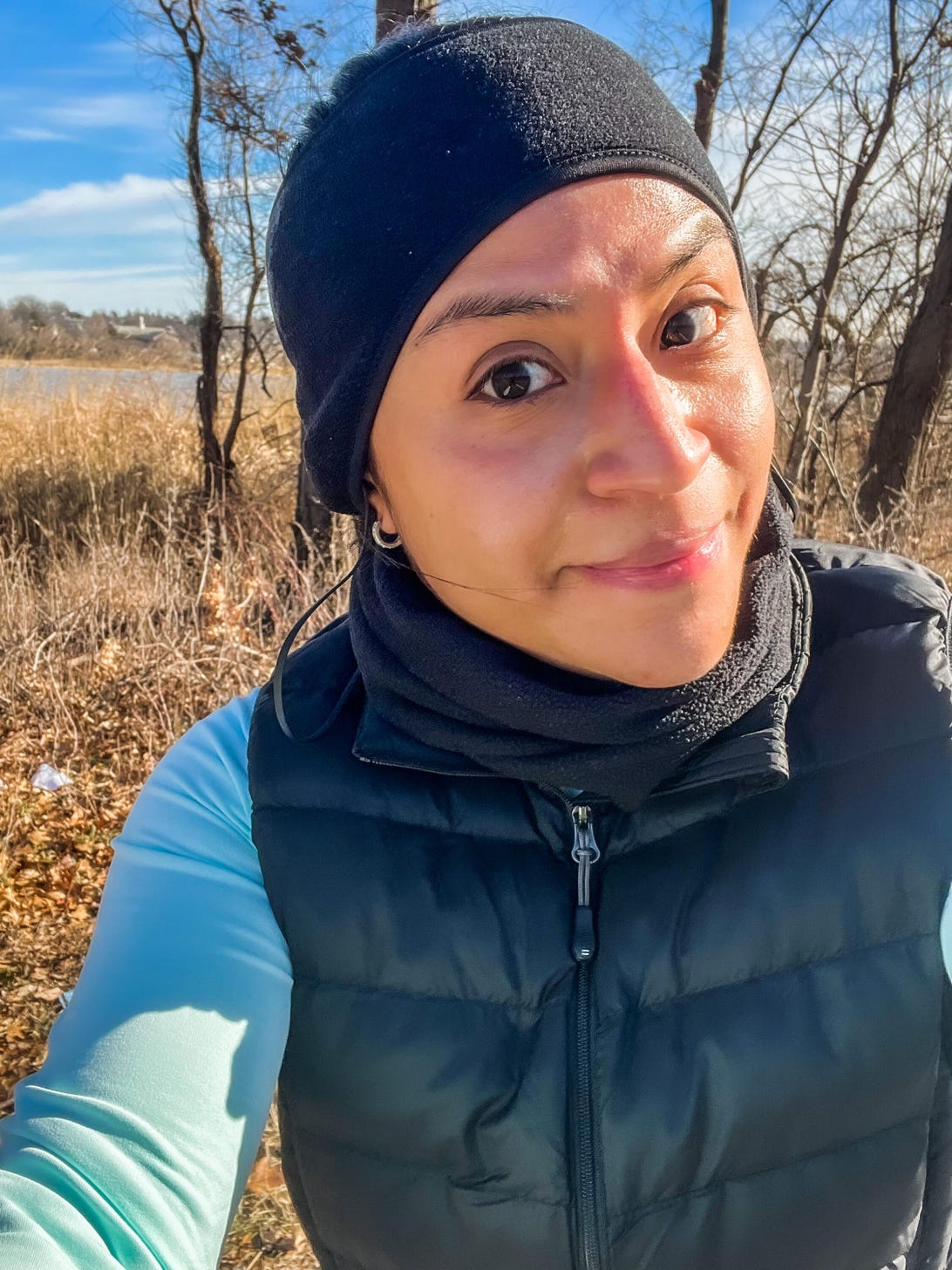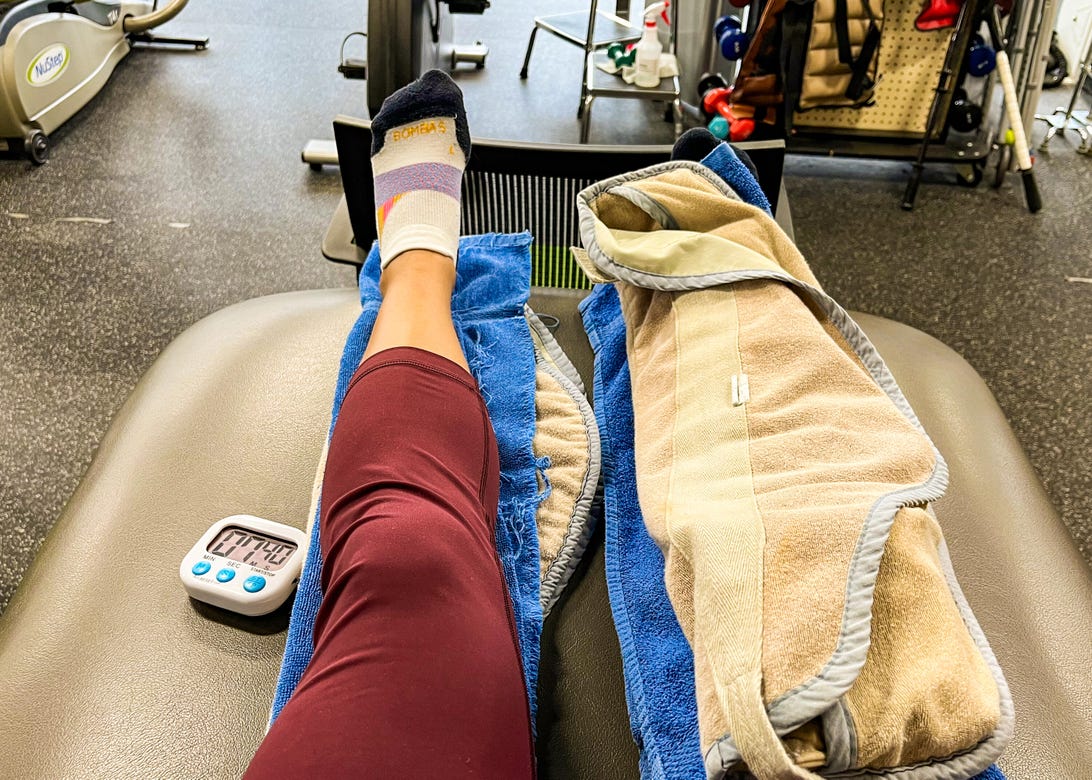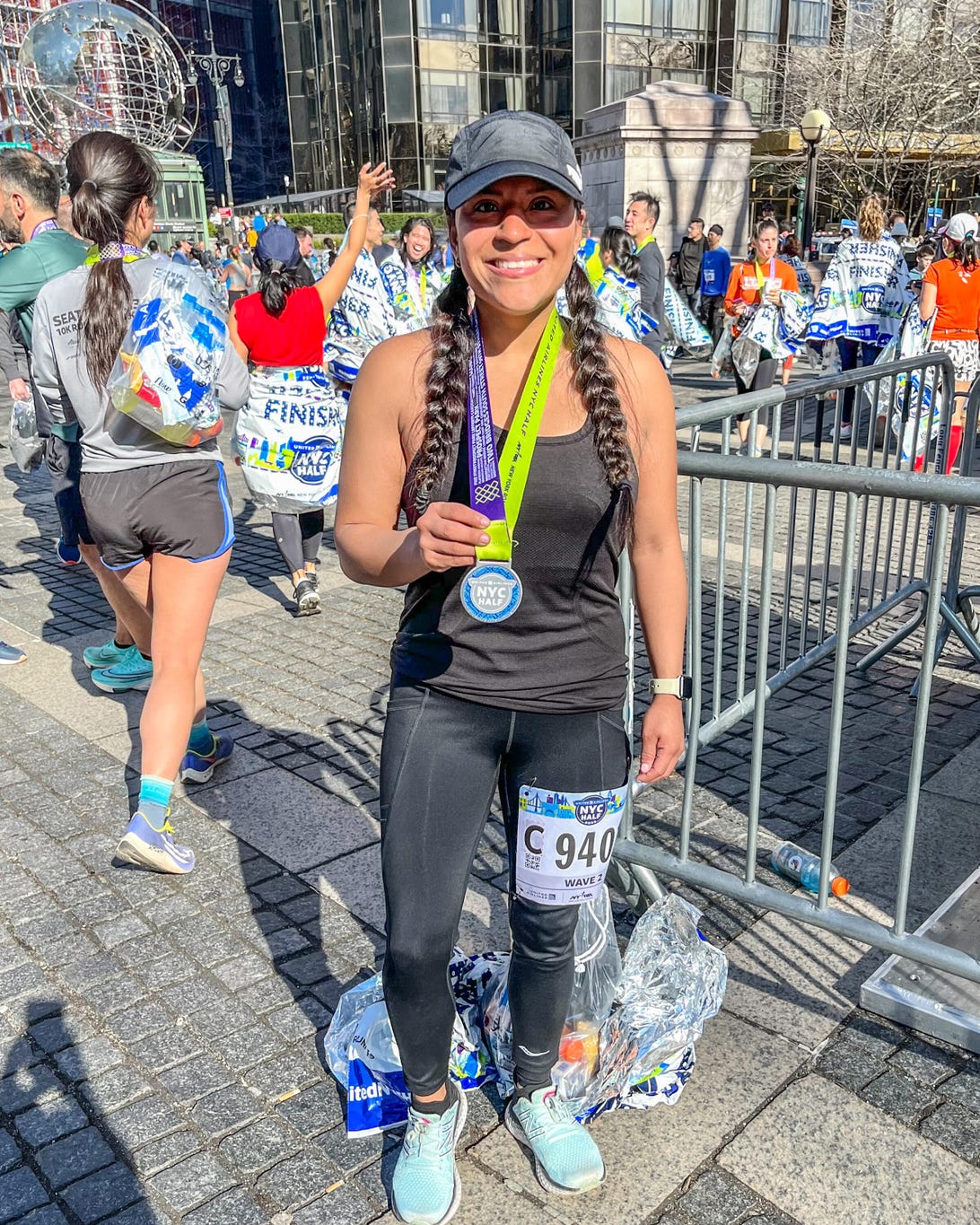Today is Global Running Day and runners from all over the world are celebrating by pounding the pavement. As a recreational runner, I couldn’t help but reflect on how my relationship with running has changed overtime. In the past decade I’ve run every distance from a 5K, 10K and 15K to a half marathon (four times!), and eventually my first marathon in 2019. Running became a therapeutic outlet for me in my 20s and eventually became a way for me to set goals and challenge myself. I remember after participating in my first 10K race, I was hooked. I wanted to see how much further (and faster) I could go.
In that period I’ve taken breaks from running to focus on other forms of fitness, but running always found its way back into my life. Then, as we all know, the past two years flipped everyone’s worlds upside down with the COVID-19 pandemic.
Throughout the pandemic, I noticed there were more people than usual running outside. With gyms shuttered, it was one of the few ways to exercise and relieve cabin fever. Despite my love of running, watching others jogging through the streets didn’t spark any interest in me to join them. I wasn’t in the right headspace because, like many others, I was worried about COVID. On top of that, all races had been canceled until further notice, my motivation to run just for fun was gone, and I had no interest in traversing the hills of my new neighborhood.
Fast-forward to the November 2021 TCS New York City Marathon, one of the first races to return since the pandemic started. As I watched my runner friends post about it on their social media feeds, suddenly I felt the spark come back to me. I remembered that post-race high after putting in all that work, and I yearned to feel that rush again. By this point, I hadn’t run consistently since 2019 when I’d trained for four months straight for the New York City Marathon. I loved my first marathon experience, and the New York City marathon exceeded my expectations.


I ran my first TCS New York City Marathon in 2019, and it was the most rewarding experience I’ve had as a runner.
Giselle Castro-Sloboda/ CNETMotivated by that spark, I impulsively signed up for raffles to get into the Chicago Marathon and the United Airlines NYC Half in 2022. I second-guessed myself immediately after entering the raffles, because I wasn’t sure if I was ready to take up running full time again. I thought to myself, if I got into one of these races, then it’s a sign for me to return to running.
I didn’t get selected for Chicago, but I did get into the NYC Half. This was a bucket-list half marathon for me because I’d heard how iconic it was. The race route gives you excellent views of the city and it’s one of the only times (besides New Year’s Eve) that Times Square is closed to traffic. It’s also a notoriously hard race to get into through the raffle, which I knew from all the years I’d entered and never got selected.
As excited as I was to run my first big race in two years, I also felt a sense of dread because this was the first time I would be training in the wintertime — the race was taking place in March. I’ve usually avoided most races that required me to train in the NYC winters because the snowy, windy and icy conditions aren’t exactly runner-friendly. Not to mention, this time around we were still in a surge in the pandemic, and I worried that new variants might put us at risk of getting sick during the race or cancel it altogether. After deciding on a conservative training plan that eased me back into running, I kicked off my training in late December. I got my endurance back pretty quickly and soon I felt like I had the hang of running again. I set up a lofty goal for myself that I thought I could attain if training went well.
I adapted well to the weather as it gradually got colder, and I even braved running in the snow, rain, wind and 10-degree temperatures. I even attempted a run when the roads were icy, and despite sliding on the sidewalk a few times, I was able to get it done. As long as I dressed appropriately (I swear by Baleaf’s fleece-lined tops and Tough Outdoors running mittens), the cold didn’t negatively affect my running, surprisingly. In fact, on the days when the weather was at its absolute worst, I felt more accomplished and tougher because I’d pushed through it.


My body adapted much easier than I expected training for a long-distance race in the winter.
Giselle Castro-Sloboda/ CNETOne particular run stands out to me. Out my window, I could see it was snowing and sleeting, and I was already dreading going out because my legs felt heavy and sore. I was a mile into my scheduled eight-mile run and out of nowhere a car passing on my left drove over a huge puddle and splashed me. I remember how aggravating that was, because now not only was I soaked, but I was also freezing. I pep-talked myself and said if I could do another mile comfortably, I’d suck up the discomfort. If it was still bothering me, I’d turn around and go back home.
Eventually I did complete the eight miles, but I also appreciated that I was the only soul on my running path because no one else was taking a stroll by the water in the middle of February. It was the equivalent to running solo in the early morning hours in the summertime to beat the midday heat and crowds.
All that running outside also helped me from falling into the winter blues funk I normally experience during that time of year. And it gave me a much-needed break from my work laptop for an hour or so out of my day, giving my eyes a break from staring at a screen.
After two and a half months of training, I hit a snag. My legs started to feel the aches and pains that come with running at high volume and on hilly surfaces. After seeing a physical therapist, I was diagnosed with tendonitis, which meant I would need to take it easy on my runs. As much as I hated to admit it, I knew this meant I’d have to scale back the goal finish time I had in mind, as well as the number of days I was running. Having never been an injury-prone runner, anxiety seeped in and I was worried that I would have to drop out of the race.


I started seeing a physical therapist when I developed pain that turned out to be tendonitis.
Giselle Castro-Sloboda/ CNETThis time around I took recovery a lot more seriously than I’ve done in the past. After all the work I’d put in, I still wanted to do this race — but safely. I was consistent with doing my physical therapy exercises as well as foam rolling, stretching, strength training, cross training (Peloton rides with Cody FTW), hydrating (I opted for UCAN and Cure electrolytes post-run) and making sure I was eating highly nutritious foods (Long distance runner and Olympian, Shalane Flanagan’s Can’t Beet Me Smoothie was one of my go-to’s) to help with recovery. Recovery made running bearable at this point, when I was starting to fall into a negative headspace.
While going through this recovery phase, the mental side of running was truly challenging for me because there were plenty of times during this training cycle that I wanted to throw in the towel. In the past, if I felt a pain or a niggle, it would resolve on its own, but I could tell that wasn’t going to be the case this time around. All things considered, I felt lucky to be healthy enough (especially during a pandemic) to take on this challenge. By the time I’d reached my taper, or the last two weeks or so before a race when training mileage is heavily reduced, I was proud that I’d mastered winter running and proven to myself that I could be an all-weather runner. I still didn’t feel 100 percent (more like 85 to 90 percent), but I also had to accept that I no longer was that same 20-something who could run endlessly without worrying about an injury.
When race day finally arrived I decided that my game plan for that day had changed. I remember browsing through some of my favorite running accounts on social media, which reminded me that races aren’t always about earning a new PR and not all of them are going to go as planned. Letting go of what you can’t control also takes away the pressure of how you think things are supposed to go. There’s a point during a long distance race when you preemptively know you’re going to struggle, and it’s easier to accept that reality beforehand. I knew my tendonitis wasn’t fully healed, and I needed a realistic approach. So instead of setting my sights on a specific finish time, I decided to run for the experience. Afterall, I signed up because I enjoy the sport of running.
Race day was the perfect spring day (even a little too warm, if you ask me), and the crowds were spectacular, as were the sights. I was more thrown off by how hilly the course was, despite having studied it multiple times and running hills regularly during my training. But nothing quite prepares you until you’re in the thick of it. There were parts that were great (catching the city views) and other parts that were not so great. My tendonitis started flaring up during the last couple of miles, which didn’t feel good, but made me relieved that it only showed up at the tail end. That didn’t change the fact that it still made the rest of the race challenging. Ultimately I finished not far off from my average half-marathon time and felt super accomplished for having just completed it.


The United Airlines NYC Half felt more challenging to me than the full New York CIty marathon because of the numerous hills runners had to tackle.
Giselle Castro-Sloboda/ CNETRunning is much like life, in the sense that there are ups and downs and it’s unpredictable. Similar to this pandemic, we’ve all experienced some highs and lows, but what matters is how we prepare for and handle what’s thrown at us. I’m glad the pandemic helped me get back in touch with my running roots, but I think this time around my legs are ready for a well-deserved break.
The information contained in this article is for educational and informational purposes only and is not intended as health or medical advice. Always consult a physician or other qualified health provider regarding any questions you may have about a medical condition or health objectives.


